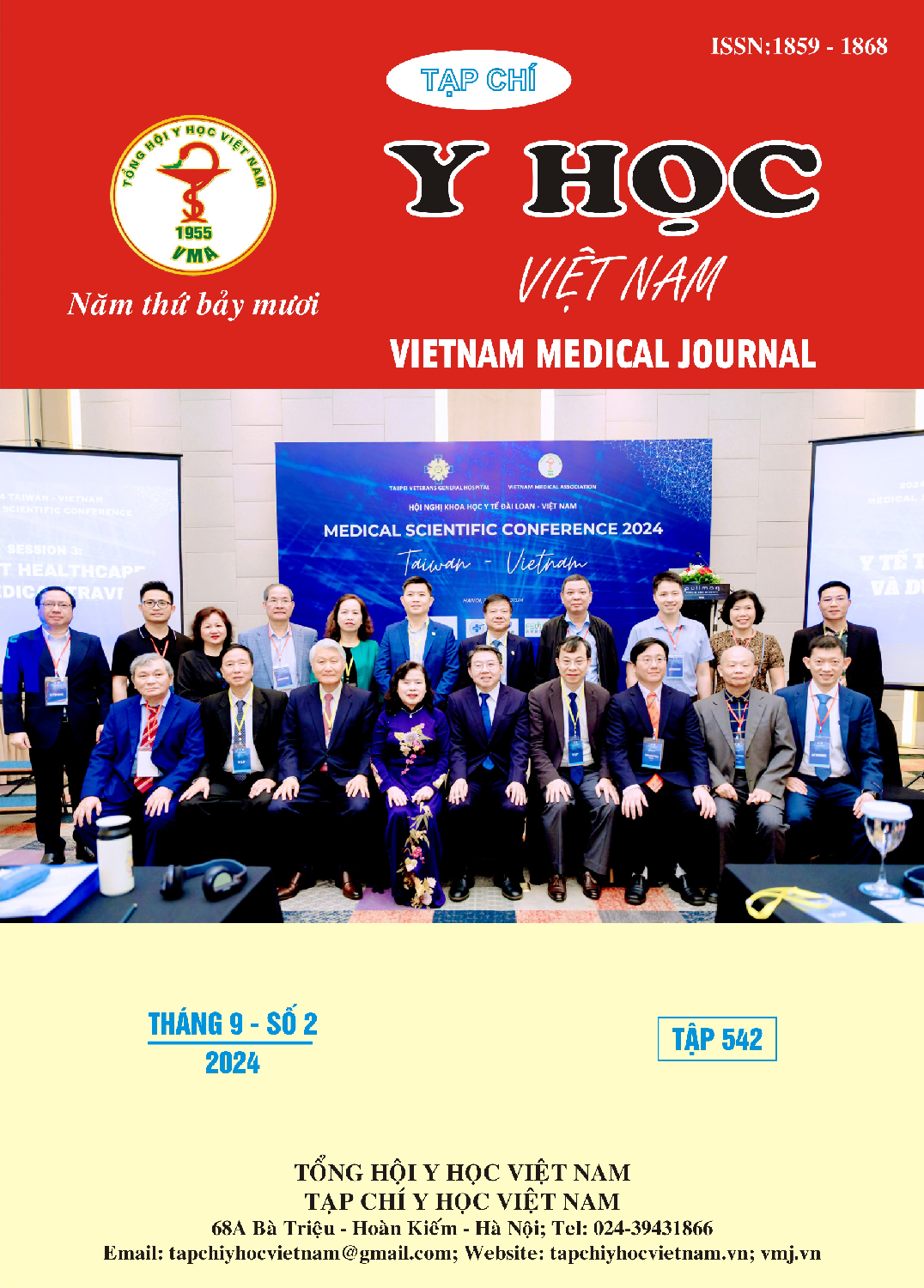CHARACTERISTICS OF CEREBRAL BLOOD FLOW IN ELDERLY HYPERTENSIVE PATIENTS WITH VERTIGO
Main Article Content
Abstract
Objectives: Survey on the characteristics of cerebral blood flow in elderly hypertensive patients with vertigo at Hue Central Hospital. Materials and methods: The study was conducted on 183 elderly inpatients at the Department of General Internal Medicine - Geriatrics, Hue Central Hospital, with a cross-sectional descriptive study. Results: The most common age group was 70-79 years (43.2%), with an average age of 74.09±7.96 years. The female-to-male ratio was 2.2. The highest percentage of blood pressure classification was in the well - controlled blood pressure group, with 42.1%. The rate of increased vascular tone in the mastoid occipital lead (67.2%) was higher than in the frontal mastoid lead (51.9%), while the rates of decreased blood flow intensity in both leads were nearly similar, at 32.8% and 39.9%. Regarding traditional medicine's clinical classification of hypertension, most patients belonged to the yin deficiency of the liver and kidney type (44.3%) and the phlegm - dampness type (30.6%), with the lowest being the dual deficiency of yin and yang type (7.1%). Conclusion: Characteristics of cerebral hemodynamics in elderly hypertensive patients with dizziness include increased vascular tone in both the frontal - mastoid and mastoid - occipital leads. The most commonly encountered clinical syndrome is liver and kidney yin deficiency with phlegm - dampness.
Article Details
Keywords
Hypertension, Cerebral Blood Flow, Vertigo.
References
2. Nguyễn Hồng Hà, Lê Thái Thanh Thảo, Diệp Hà Trúc Thanh và cộng sự (2022), “Liên quan tăng huyết áp và tình trạng bất thường lưu huyết não trên bệnh nhân điều trị tại bệnh viện trường đại học Y Dược Cần Thơ”, Tạp chí Y học Việt Nam, số 1B tháng 10, tr.185-188.
3. Trần Thái Hà, Nguyễn Thị Trang, Chử Minh Tuấn (2023), “Khảo sát thể bệnh Y học cổ truyền của tăng huyết áp ở người cao tuổi tại bệnh viện Y học cổ truyền Trung Ương”, Tạp chí Y học Việt Nam, số 2 tháng 10 năm 2023, tr. 86-91.
4. Lê Minh Hoàng, Nguyễn Ngọc Chi Lan (2022), “Đại cương về đông tây y kết hợp điều trị bệnh lão khoa” - “Tăng huyết áp”, Đông Tây Y kết hợp điều trị bệnh Lão khoa, tr.1-26, tr. 29-39, Nhà xuất bản Y học.
5. Hội tim mạch Việt Nam (VNHA) (2022), Khuyến cáo của phân hội tăng huyết áp – Hội tim mạch Việt Nam (VSH/VNHA) về chẩn đoán và điều trị Tăng huyết áp năm 2022.
6. Nguyễn Huỳnh Hạnh Trang (2015), “Nghiên cứu lưu huyết não đồ ở bệnh nhân tăng huyết áp nguyên phát”, Luận văn Thạc sĩ Y học, Trường Đại học Y Dược Huế.
7. Phan Thanh Thủy và Trần Khánh Toàn (2022), “Thực trạng tăng huyết áp và một số yếu tố liên quan ở người cao tuổi tại tỉnh Quảng Bình”, Tạp chí Y học Việt Nam, số 01 (519), tr. 208-212.
8. Trần Thanh Toàn (2023), “Nghiên cứu đánh giá nguy cơ tim mạch bằng thang điểm Score2 và Score2-OP theo Hội tim mạch Châu Âu 2021 trên bệnh nhân tăng huyết áp”, Luận văn thạc sĩ Y học, Trường Đại học Y Dược Huế.


